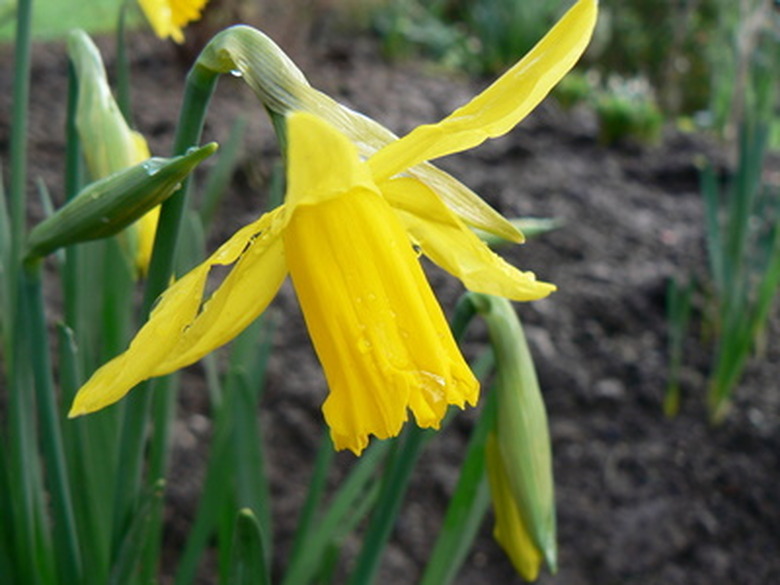Flower Bulb Identification
Identifying bulbs is not as simple as one might think because of the huge variety available. Bulbs vary in size, shape and even type. They are all fairly simple to grow and provide color to perennial beds and rock gardens in spring, summer and even fall.
Types
**Daffodils and tulips are probably the most common bulbs,** but many other varieties of bulbs exist. In addition to the spring blooming bulbs most people are familiar with, there are corms, rhizomes, tubers and tuberous roots. While these are technically not bulbs, they are sold as such.
Features
True bulbs usually have a hard or papery outer shell and contain scale-like leaf bases. They contain all the food the plant needs to grow wrapped around a bud. Corms are similar to bulbs but have a bud on top of the bulb, instead of inside. Rhizomes spread horizontally instead of vertically beneath the soil. Tubers are swollen, underground stems, while a tuberous root is a swollen root. Bulbs may bloom in the spring, summer and even fall.
- Identifying bulbs is not as simple as one might think because of the huge variety available.
- In addition to the spring blooming bulbs most people are familiar with, there are corms, rhizomes, tubers and tuberous roots.
Identification
Hyacinth, narcissus, scilla, snowdrop, tulip and grape hyacinth all resemble garlic cloves–rounded in form, pointed on the top and flat on the bottom. They may have a white or brown papery outer shell and vary in size. Narcissus and hyacinth are the largest. Snowdrop and grape hyacinth are the smallest. Cyclamen, crocus, fritillaria and tuberous begonia are corms. They have a flat, rounded base with a tiny bud (or buds) protruding out the top. Dahlias have several swollen roots that resemble sweet potatoes; their leaves emerge from the tops. Bearded irises have swollen, white tubers resembling paddles and are clumped together.
- Hyacinth, narcissus, scilla, snowdrop, tulip and grape hyacinth all resemble garlic cloves–rounded in form, pointed on the top and flat on the bottom.
- Snowdrop and grape hyacinth are the smallest.
Care and Storage
Spring bulbs are perhaps the simplest to care for. They are planted in early fall when temperatures have begun to cool, but the ground is still workable. They are planted pointed side up, between 3 and 6 inches deep. Tuberous roots and tubers are planted either in the spring or fall, depending on the variety. Dahlias must be dug up in temperate zones and stored over winter. Summer blooming corms, such as tuberous begonias, cyclamens, lilies and ranunculus are planted in the spring and dug up in the fall. They are stored in sawdust or peat moss in a cool, dark place.
- Spring bulbs are perhaps the simplest to care for.
- They are planted in early fall when temperatures have begun to cool, but the ground is still workable.
Uses
Spring bulbs are often clustered together in perennial beds and under trees, providing the first flush of color in the spring. Corms and tubers are also grown along with perennials, providing summer and fall color. Bulbs can also be naturalized, grown in meadows and lawns or tucked into rock gardens. Corms are often grown in containers, making the annual fall storage simple. Several bulbs, such as narcissus and hyacinth can be forced to grow indoors during the winter, providing some welcome color during the gray winter months.
References
- "The Garden Primer"; Barbara Damrosch; 1988
- University of Illinois Extension: Bulbs and More: Bulb Basics
